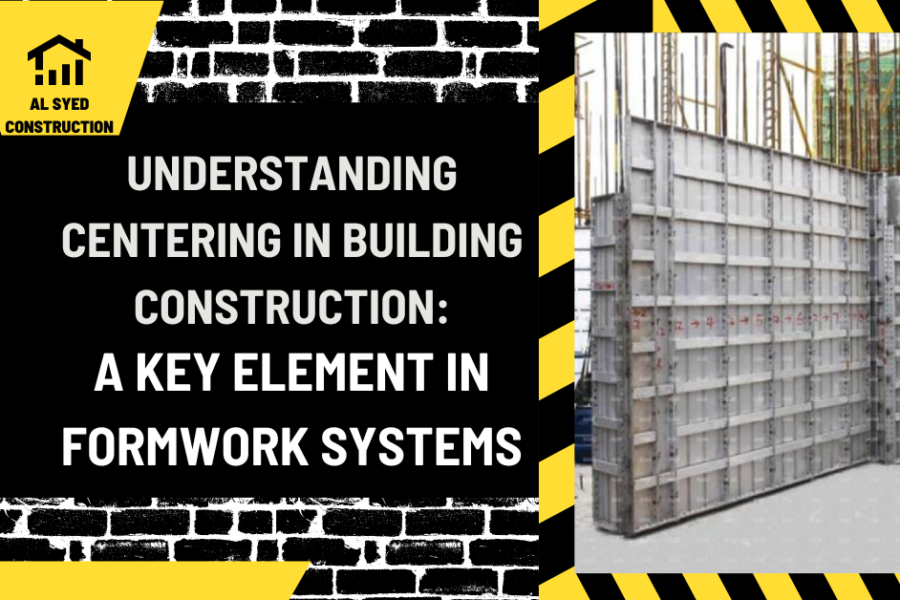Understanding Centering in Building Construction: A Key Element in Formwork Systems
Table of Contents
Introduction
Centering, a critical component in the construction industry, plays a vital role in the formation of concrete structures. It is an essential part of formwork systems, which are temporary molds used to hold and shape concrete until it hardens. This article explores the concept of centering, its importance in building construction, and the various aspects that contribute to its effectiveness in ensuring the structural integrity and aesthetic appeal of concrete elements.
The Role of Centering in Construction
Definition and Purpose
Centering refers to the temporary support structure used to hold the shuttering or formwork in place for cast-in-place concrete elements such as slabs, beams, and arches. Its primary purpose is to maintain the formwork’s shape and alignment during the concrete pouring and curing process, ensuring that the final structure meets the specified design and dimensions.
Components of Centering Systems
Centering systems typically consist of a framework of vertical supports, horizontal beams, and plywood or metal sheets that form the mold for the concrete. The materials and design of the centering system depend on the size and complexity of the structure, as well as the load it needs to support during construction.
Importance of Centering in Building Construction
Ensuring Structural Accuracy
Proper centering is crucial for achieving the desired shape and dimensions of concrete elements. It ensures that the formwork remains stable and aligned during the pouring and curing process, preventing deformations and deviations from the design specifications.
Safety Considerations
Centering also plays a significant role in construction safety. A well-designed and properly installed centering system can withstand the weight of wet concrete and construction loads, reducing the risk of formwork collapse and ensuring the safety of workers on site.
Best Practices for Effective Centering
Material Selection and Design
Choosing the right materials and design for the centering system is essential for its effectiveness. The materials should be strong enough to support the loads and durable enough to withstand the construction environment. The design should consider factors such as load distribution, ease of installation, and adaptability to different shapes and sizes of structures.
Regular Inspections and Maintenance
Regular inspections and maintenance of the centering system are crucial to identify and address any issues that may compromise its stability and performance. This includes checking for signs of wear and tear, ensuring proper alignment, and making necessary adjustments or repairs.
Conclusion
Centering is a fundamental aspect of building construction, particularly in the creation of concrete structures. Its role in supporting formwork systems is crucial for achieving structural accuracy, maintaining safety standards, and ensuring the overall success of construction projects. By adhering to best practices in material selection, design, and maintenance, construction professionals can ensure the effectiveness and reliability of centering systems, contributing to the quality and longevity of the built environment.




